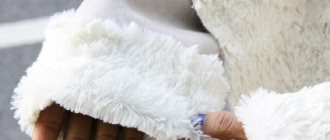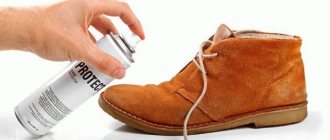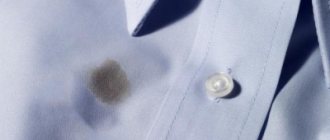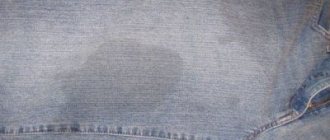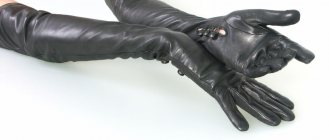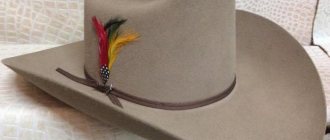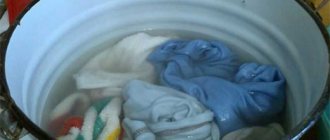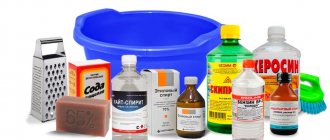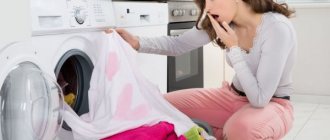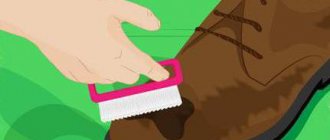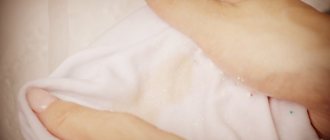It's no secret that light-colored things tend to get dirty quickly. White color literally attracts dirt, yellow and greasy stains, especially for children's clothes. You have to constantly struggle with this, and over time, after several washes, almost new linen turns into unusable rags. There are several proven ways to wash white clothes and preserve their original appearance.
Basic rules and preparation
Before we talk about how to wash white linen, you need to know a few simple rules that will help you avoid making serious mistakes in the future. First of all, you should not allow light-colored laundry to be washed together with gray, dark or colored items. It must be washed separately! In addition, light-colored clothes will need to be separated by type of fabric, since there are different standards for washing different materials. They are processed in water of different temperatures and the presence of different washing and bleaching agents.
Another important factor to remember is to never immerse dirty laundry in boiling water. This will cause the stains to penetrate even deeper into the fabric and will be very difficult to remove without damaging its structure. If the laundry is too dirty, then before washing it must be soaked and left for several hours. At the same time, bleaches, stain removers and washing powder are added to a bowl of cold water.
For washing in hard water, it is recommended to use softening agents such as Domol or Calgon or powders containing similar components. When washing by hand, you can add regular baking soda.
Using various bleaches, you need to know what things can be bleached with one or another product. For example, linen and cotton fabrics can be washed using bleach or bleaching agents based on it. Other materials will require milder products.
If white washing is carried out in a machine, it is worth periodically diagnosing it. Heating elements may form thick scale and drain hoses may become clogged. This will disrupt the proper operation of the machine and the rinsing mode. Subsequently, the quality of washing will be unsatisfactory.
How to remove yellowed stains from clothes
Yellow spots appear not only from contamination during wear, but also from improper washing and long-term storage of white items. Fresh yellowed areas are treated:
- laundry soap;
- hydrogen peroxide - soak in detergent, then wipe off dirt with peroxide;
- aspirin – 2 tablets per tablespoon, rub the mixture after soaking.
Old stains on white things are dealt with using the following methods:
- oxalic acid – a teaspoon per glass of water;
- citric acid – 2 teaspoons per 200 milliliters;
- treat the yellowing with gasoline, then with ammonia.
Natural white fabrics can be boiled in bleach (Persol).
How to boil and soak light-colored fabrics
Although the digestion process has long been outdated, many housewives still use it. If you do everything correctly, then after time the effect will be noticeable. To do this, you must follow the following rules:
- The laundry container should be selected with the calculation of 1 kg of dry laundry per 10 liters of water.
- Mix your preferred detergent in water - powder, whiteness or soap.
- Place dirty clothes into the prepared solution and put on fire.
- As soon as the liquid boils, it is better to lower the temperature a little so that the soap suds do not pour out of the top, and the liquid continues to boil.
- The process can take from 30 minutes to 2 hours, depending on the product used.
Before washing or boiling, the laundry is soaked in the following solutions:
- A piece of grated laundry soap and a tablespoon of soda per 10 liters of water.
- 1 kg of soda and a liter of Whiteness are dissolved in 20 liters of water.
- A piece of crushed soap, 200 grams of soda and 20 ml of ammonia and peroxide per 20 liters of liquid.
Important! When boiling, things should be placed immediately, and not after the water begins to boil.
How to properly wash by hand?
To wash by hand, you need to prepare a large basin and detergent.
Procedure:
- Fill a basin with water at a temperature suitable for washing.
Dilute the detergent.- If necessary, especially dirty areas can be soaped with laundry soap.
- Soak things. This will make it easier to remove dirt later. Soaking time can be from 15-30 minutes for delicate clothes and up to 4 hours when washing cotton bed linen and waffle towels.
- If after soaking the water becomes dirty, it must be replaced and the washing powder or gel dissolved in it again.
- Wash by hand. Stained areas will be easier to clean if you gently rub them with a brush.
- Rinse things by changing the water.
Washing clothes automatically
Regardless of how the laundry is washed - in a washing machine or by hand, there are separate temperature conditions for each fabric and type of soiling:
- Lightly soiled items are usually washed at a low temperature of 40 degrees.
- For more significant contamination in the form of stains and yellowness, wash at a temperature of 60 degrees.
- 95 degrees is the water temperature for heavily soiled laundry made from cotton, linen or calico.
Regardless of the quality and type of fabric, over time, white items turn yellow or gray. To return clothes to their former whiteness, there is an effective and proven method. To do this you will need 200 grams of any powder and 2 tbsp. l. Persalts. The components are mixed and sent to the powder container found in automatic washing machines. The water should be heated to a temperature of 95 degrees.
Sorting
Before washing any items, you need to inspect the tags and pay attention to the composition of the fabrics and the manufacturers’ recommendations. As a rule, they indicate at what temperature the product should be washed, whether it can be done in a machine, bleaching and other important points.
Do you store laundry in the washing machine?
Oh yes! No.
It is necessary to pay attention to the composition of the fabric and the degree of contamination. Cotton, wool, and synthetics should be washed separately from each other. The recommended temperature conditions, detergents and speed of rotation of the washing machine for different fabric compositions differ significantly.
It is advisable to wash woolen items by hand or hand wash at low temperatures using special products.
Attention! In the absence of gel or powder for woolen items, it can be replaced with hair shampoo, but only when washed by hand.
Features of hand washing
There is one proven way to wash white linen so that it is snow-white - this is pre-soaking. In addition, hand washing at 95 degrees is not the best option. The water is too hot for this and you can easily get burned.
We recommend:
How to wash diesel fuel from clothes
The optimal temperature at which you can wash things by hand is 40 degrees. The following methods are usually used for this:
- Salt with peroxide and alcohol are ideal for bleaching wool and silk clothes. To prepare the mixture you will need 9 tbsp. l. regular table salt, which must be mixed with 3 tbsp. l. hydrogen peroxide, the same amount of ammonia and washing powder, calculating the volume of water to be 12-20 liters. The water should be heated to a temperature of 40 degrees. Dirty laundry is placed in a container with this liquid, wrung out and left for 5 hours. After the time has expired, wash by hand. If necessary, you can add a little bleach.
- Laundry soap is an excellent tool for removing yellowness, stains and washing grayed items. The laundry is pre-soaked in cold water and thoroughly rubbed with a bar of soap. Leave for 3 hours, then squeeze well and wash at 40 degrees. Can be washed either by hand or in a washing machine.
Note! Items made from thin fabrics bleach well after the first wash, but thicker items may require a second bleaching procedure.
Temperature
White cotton items can be safely washed at high temperatures of 60-90 degrees without fear of damaging the product. But this applies to snow-white things. If the laundry is ivory or beige in color, then it is better to refrain from high-temperature conditions.
Synthetics should be washed at a maximum of 40 degrees, otherwise there is a high risk of damage to the fabric structure.
Wool and acrylic do not tolerate high temperatures.
Woolen items may shrink and shrink in size, making them unsuitable for further use.
Important! Despite generally accepted rules, manufacturers' recommendations must be followed. They are indicated on tags or factory labels.
White linen
Detergents for washing white fabrics
Nowadays it is difficult to do without the use of chemicals. Although they are unsafe, and many try to do without them, they wash well. Among them the following funds can be distinguished:
- Whiteness is a fairly effective and aggressive agent, but it must be used with extreme caution. Otherwise, things may be damaged. It copes well with yellow spots and grayness, even if it is added to the drum of the washing machine.
- Domestos is a modern cleaning product that is often used for soaking or machine washing.
- Dishwashing detergent will remove grease or sweat stains. They are less aggressive, so it is advisable to use them for hand washing. In automatic mode, liquid is added directly to the powder container.
Folk remedies for whitening white things:
- A solution of potassium permanganate with laundry soap. For 10 liters of water dilute 2 tbsp. l. facilities. Then the laundry that needs washing is soaked, rubbed with a bar of soap and placed in the solution for 3 hours, after which it is taken out and washed in the usual way.
- Ammonia is an effective bleaching agent, but you should not abuse it. With its help, yellowness and grayness are perfectly removed from white things. There are two options for using it. The first is to add hydrogen peroxide. The recipe is as follows: to 5 liters of water at a temperature of 40-70 degrees, add equal parts of both components in a dosage of 2 tbsp. l. Things are soaked for half an hour in this mixture, and then washed using the usual method. In the second case, instead of peroxide, add 6 tbsp. l. salt or soda.
- Laundry soap is an easy-to-use, practical and safe product. Its use consists of thoroughly soaping soaked laundry, which after two hours of exposure is washed using the usual method.
- Starch has been used for rinsing light-colored laundry since ancient times. Recipe - 2 tbsp. l. starch per 5 liters of water.
In conclusion, it is worth noting that all methods are effective, but are not suitable for all types of fabric. How to wash white clothes and what products to use is up to the housewife to decide. As for washing powders and other household chemicals, they need to be used wisely and it is better to avoid their use when washing by hand.
Preparing white items
Before you start washing any items, you should be well prepared. The final result depends on this stage. Every self-respecting housewife needs to have a quality product for white. They contain bleaching particles that help maintain the brightness and whiteness of fabrics.
Powders for colored laundry, as a rule, can distort the color of white items. In the absence of a special product, powders and gels, which are called universal, are suitable. They are suitable for white and colored items.
Light things
Items must be carefully inspected for stains and stubborn dirt. In such cases, special stain removers will be additionally needed. They are applied directly to the stain according to the manufacturer's instructions. If the item has acquired an odd tint, stain removers are added to the soaking water.
Expert opinion
Irina. Housewife.
Ask a Question
Important! Grease stains can be easily removed with dishwashing detergent.
They dissolve fats. At the same time, you should pay attention that they do not contain bleaching components. They must be applied to the stain and left for 30-40 minutes before washing.
Removing stains
Local stains can be removed by applying a spot bleach:
- Use two aspirin tablets moistened with a little water.
- Apply the resulting solution to the contaminated area and leave for several hours.
- Then rinse and machine wash.
Instead of tablets, use salt and ammonia in equal proportions or citric acid diluted in warm water.
There are a variety of stain removal methods available.
Wash handcuffs, sweat stains in armpits, shirt collar with laundry soap and leave for a while. We can get rid of the unpleasant smell of soap by adding a few drops of clear essential oil when rinsing again.
Ironing
After washing, iron natural fabrics, especially children's clothing and bedding.
Iron clothes
To make ironing easier or avoid ironing, place a few ice cubes in the washing drum. Turn on the dryer. Melted ice will have the same effect as a double boiler.
